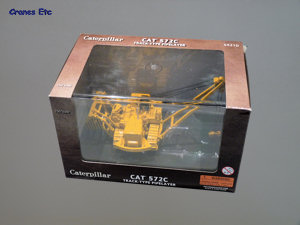 | | Slightly different box style. |  | 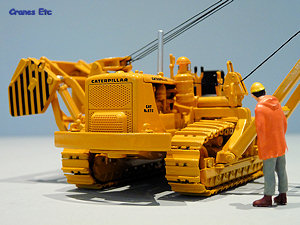 | | Impressive detailing overall. | 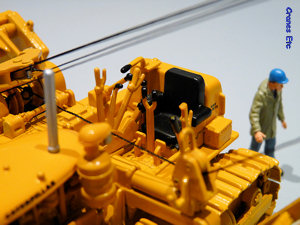 | | Nice control levers around the operator's seat. | 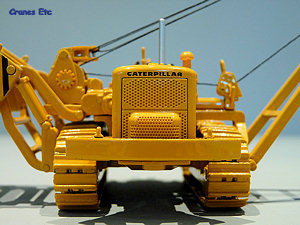 | | Perforated grille at the front. The winches can be operated by turning the knob at top left above the track. | 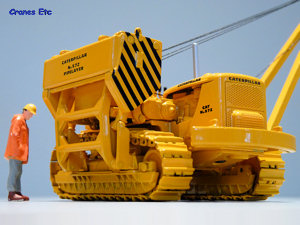 | | Counterweight folds right up. |
| The CAT 572C Pipelayer is an historic Caterpillar machine which was first manufactured in 1957 and derives from the first integrated pipelayer machine, the 583, introduced in 1955. The 572C had a 128hp diesel engine and an 86,000lbs lift capacity on the winch.
This model emanates from an agreement that Norscot has with the Antique Caterpillar Machinery Owners Club (ACMOC) and Caterpillar to make models of pre-1960 equipment.
Packaging
The model comes in a slightly different Caterpillar box style from the usual Norscot contemporary models. It is windowed so the model can be seen, but it actually encloses a plastic display case. Although the case is not of the highest quality (it has a moulding mark right in the centre of the top), it nevertheless adds to the model as the plinth also includes a name plate.
The box cover includes an extract from the original marketing brochure which is a nice touch. The model can be removed from the plinth if desired by undoing a screw and this is easy to do.
There were no defects or missing parts on the review model.
Detail
The first impressions are that this is a nicely detailed model.
The metal tracks are well made and the track frames they are mounted on have good details. The only negative point is that the track sprockets are plastic and the colour match is not quite right so it shows under certain lighting conditions.
The engine compartment is good, with clearly defined details. At the front the radiator grille looks impressive with fine perforations and smooth shaping.
The operator's seat is plastic, and is surrounded by numerous control levers which are also plastic. However they do not look plastic and the slight flexibility they have feels right for control levers.
At the rear there is a well formed towing hitch and the casting has some detailed blanking plates. The writing at the rear is excellent with even the smallest words legible under a magnifying glass.
The counterweight mechanism looks very sharp, helped by the rivets being painted, and the very good graphics. The boom assembly is simple, and in this it replicates the original. None of the assemblies have moving pulleys, although they are all detailed.
Features
The tracks roll relatively freely, only occasionally sticking as a particular link enters a sprocket.
The counterweight mechanism articulates in a very nice fashion, and can be folded up tight to the tractor.
Although the winch can be operated to raise and lower the boom and the hook, they cannot be operated separately which is a weakness which limits the display possibilities a little. The stringing of the boom means it cannot be lowered flat as there is not enough on the drum although it could be restrung fairly easily.
Quality
This is a well made, well presented model. It is mostly made of metal and the casting and graphics are very good.
Price
The 572C is very reasonably priced and so represents very good value.
Overall
Models of historic machines by their nature need to do justice to the machines they are representing and this offering by Norscot hits the spot. It looks good in its display case, and is well detailed enough to satisfy anyone looking close up. Although there are a few areas for improvement, overall it is highly recommended.
Footnotes
The model first appeared in 2008.
|
| |
| 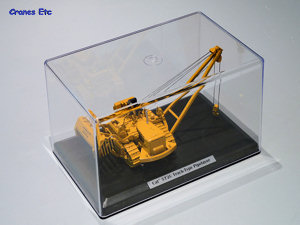 | | The model has its own display case so dust should not be a problem on this one. | 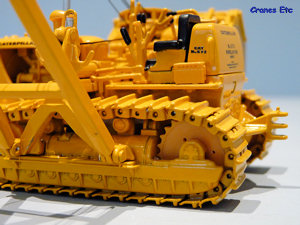 | | Metal tracks and plenty of detail on the track frames. | 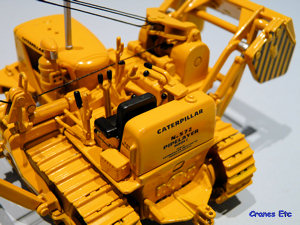 | | Sharp lettering on the rear is legible - even the smallest writing. | 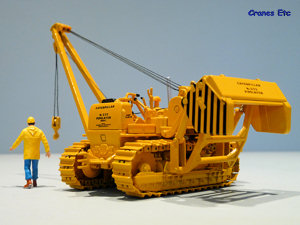 | | Counterweight folded out. | 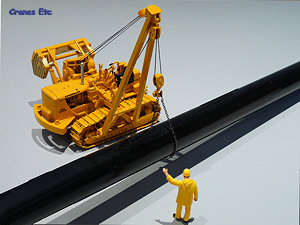 | | Lifting a pipe string, the main purpose of the machine. |
|

